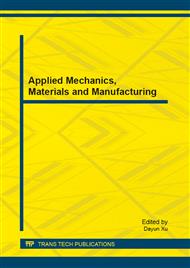p.280
p.284
p.289
p.293
p.302
p.308
p.313
p.318
p.322
Temperature Coefficient of Thin Film Resistance Temperature Detectors for Improved Heat Flux Sensors
Abstract:
The measurement of thermal properties or internal or external boundary conditions requires temperature and heat flux data. Both information can be provided by heat flux sensors. The one consisting in measuring temperature at various locations within the wall and using inverse method to estimate wall temperature and heat flux is among those providing the lowest measurement bias for transient heat flux measurement. However, this very accurate sensor requires time consuming technical work for microthermocouples implementation and due to the welding, one cannot locate precisely the temperature measurement. The idea developed in this work is to replace the wire microthermocouples by thin film resistance temperature detectors deposited on polymer substrate in order to ease the fabrication and to increase the accuracy of heat flux sensor. As the deposited sensors are RTDs, a preliminary study is performed showing the effect of the metal as well as the processing conditions on the electrical resistivity and temperature coefficient of copper and aluminum thin film
Info:
Periodical:
Pages:
302-307
Citation:
Online since:
August 2013
Authors:
Price:
Сopyright:
© 2013 Trans Tech Publications Ltd. All Rights Reserved
Share:
Citation:


